Mansfield City Council Moves to Approve 34 New Gas Wells and Compressor Station Even While Mulling New Ordinance
 Pending Permit for an 18% Increase in City’s Well Count Wasn’t Disclosed to Citizens or Media at Special December 3rd Workshop on Gas Regulations
Pending Permit for an 18% Increase in City’s Well Count Wasn’t Disclosed to Citizens or Media at Special December 3rd Workshop on Gas Regulations
What: Mansfield City Council to Consider Large new Gas Facility Permit, including New Compressor Station on Debbie Lane
When: Monday Night, January 12th 7 pm
Where: Mansfield City Hall, 1200 East Broad Street
Mansfield’s city council is scheduled to move forward tonight with a second hearing on a request from Edge Resources to build 34 additional gas wells and a new compressor station despite a pledge by the council in December to consider new ordinances designed to be more protective of public health, a process that is still ongoing and that concerned residents hope will reduce hazards posed by drilling within the city.
Although City Hall had been working with Edge Resources for months on a renewal of its expired 2008 Special Use Permit that would raise the city’s well count by 18%, the Mansfield City Council and staff didn’t disclose that information to residents or the media when it convened a special workshop to discuss a new gas drilling ordinance on December 3rd.
“It was very disappointing to know that while we were beginning good faith discussions on new ordinances with the Council, it had already made a decision to grant a second hearing to renew an expired permit that will significantly add to the number of wells and allows yet another compressor within city limits,” said Tamera Bounds, a Co-chair of of local citizen advocacy group, Mansfield Gas Well Awareness (MGWA).
City officials say they have no choice but to OK the renewal because the original SUP was filed before the city passed its current gas ordinance. But Bounds and others say the timing of council approval, and lack of transparency to the public about the permit makes the effort premature.
“Even if their hands are tied, they could wait until any revisions of the ordinance are in place and incorporate those changes into the Edge permit.” She specifically listed baseline air testing, vapor recovery, “flowback” control, and infrared camera monitoring as state-of-the-art features that every new gas facility permit should include.
Edge’s proposed permit calls for thirty-four additional wells to be drilled within 350 feet of homes near Debbie Lane with a new compressor and frack pond also constructed at the same site, where there are already two wells. Mansfield Gas Well Awareness is pushing for new ordinances with setbacks of at least 1500 feet between gas wells, compressors and homes.
Others were less circumspect in their criticism of what they called the council’s duplicity in dealing with residents. “It’s outrageous this pending permit wasn’t disclosed at the December 3rd council meeting called specifically to talk about how to regulate old and new gas facilities in Mansfield,” said Jim Schermbeck, Director of Downwinders at Risk, the local clean air group working with MGWA to change the city’s ordinance. “Even while City Hall representatives were talking about a dialogue with citizens to consider new regulations, they deliberately withheld notice about a huge new increase in gas drilling being requested.” He also called for a delay in council action on the permit until after a new ordinance was passed.
TCEQ’s Terrible, Horrible, No Good, Very Bad Air Plan for DFW
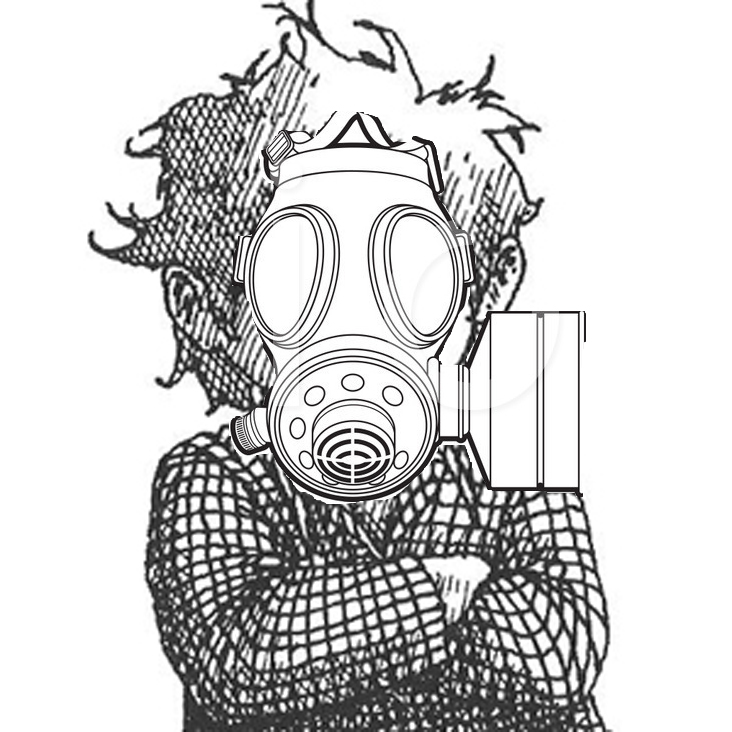
TCEQ Public Hearing on the new DFW Anti-Smog Plan
Thursday, January 15th 6:30 pm
Arlington City Hall, 101 W. Abram
Over the last two decades, we've seen some pretty lame DFW clean air plans produced by the state, but the newest one, scheduled for a public hearing a week from now, may be the most pathetic of the bunch.
From a philosophical perspective, the Texas Commission on Environmental Quality stopped pretending to care about smog in DFW once Rick Perry decided to run for president around 2010 or so. Computer modeling was scaled back, staff was slashed, and the employees that were left had to be ideologically aligned with Perry's demand that no new controls on industry (i.e potential or existing campaign contributors) was preferable to six or seven million people continuing to breathe unsafe and illegal air.
TCEQ's 2011 anti-smog plan reflected that administrative nonchalance by concluding – in the the middle of the Great Recession – that consumers buying new cars would single-handedly deliver the lowest smog levels in decades. It did not. It went down in history as the first clean air plan for the area to ever result in higher ozone levels. The first, but maybe not the last.
This time around, it's not the cars themselves playing the role of atmospheric savior for TCEQ, but the fuel they'll run on. Beginning in 2017, the federal government is scheduled to introduce a new, low-sulfur gasoline that is predicted to bring down smog by quite a bit in most urban areas. Quite a bit, but not enough to reach the ozone standard of 75 ppb that's necessary to comply with the Clean Air Act by 2018. It's the gap between this official prediction and the standard where the state is doing a lot of hemming and hawing.
TCEQ staffers really did tell a summertime audience in Arlington that that estimated 2018 gap of between 1 and 2 ppb was "close enough" to count as a success. Now, you might give them the benefit of the doubt, but remember this is an agency that has never, ever been correct is its estimation of future ozone levels. After five attempts over the last two decades, TCEQ has never reached an ozone standard in DFW by the official deadline. Precedent says this plan won't even get "close enough."
Plus, we know getting "close" to 75 ppb isn't protecting public health in DFW. Even as this clean air plan is being proposed by Austin, the EPA is moving to lower the national ozone standard to somewhere between 60 and 70 ppb (There's a hearing on that at Arlington City Hall on January 29th). That new EPA ozone standard is due to be adopted by the end of this year. So this entire state plan is obsolete from a medical perspective. Instead of aiming for a level of ozone pollution closer to 70 ppb as soon as possible, it's not even getting down to a flat 75 ppb at all DFW monitors by 2018. It wil take an entirely new plan, and pulling TCEQ teeth, to do that much later. In other words, millions of people will have to wait as much as a five to seven years longer to get levels of air quality we know we need now in 2015.
What are the major flaws this time?
1. TCEQ is Using 2006 in 2014 to Predict 2018.
The EPA recommends that states use an "episode" of bad air days from the last three years – 2009-2013 – in trying to estimate what ozone levels will be three years from now. The more recent the data, the better the prediction.
TCEQ is ignoring that recommendation, relying on a computer model that's already nine years old. This has all kinds of ramifications on the final prediction of compliance. Instead of having more recent weather data, you have to "update" that variable. TCEQ doesn't have to compensate for the drought DFW is experiencing now or factor in a year like 2011 where the drought caused a worst case scenario for ozone formation.
TCEQ isn't using more recent data on how sensitive monitors are to Nitrogen Oxide (NOx) and Volatile Organic Compounds (VOCs) – the major kinds of pollution that cause smog . That's important because gas production in the Barnett Shale has put a lot more VOCs in the air. But instead of getting a more accurate post-drilling boom read on what's driving smog creation, the TCEQ is relying on a picture that starts out before the boom ever started.
The further you reach back in time for a model to predict future levels of smog, the fuzzier that future gets, and the less accurate the results. TCEQ is using a model that's twice to three times older than EPA guidance recommends. What are the odds that TCEQ estimates will be correct based on this kind of methodology?
2. TCEQ is Downplaying OIl and Gas Pollution
Citizens attending the air quality meetings in Arlington over the past year have seen the TCEQ try and hide the true volume and impact of oil and gas pollution at every turn. Instead of all the industry emissions being listed under the single banner of "Oil and Gas Pollution," the Commission has tried to disperse and cloak them under a variety of categories in every public presentation.
"Other Point Sources," a classification that had never been seen before, was the place where pollution from the 647 large compressor stations in DFW could be found – if you bothered to ask. "Area Sources" was where the emissions from the thousands of other, smaller compressors could be found – again, only if you asked. "Drilling" was separate from "Production." And despite other agencies being able to tease out what kind of pollution came from the truck traffic associated with fracking within their jurisdictions, the TCEQ never bothered to estimate how much of the emissions under "Mobile Sources" was generated by the Oil and Gas industry.
The reason the TCEQ has tried so hard to hide the true volumes of oil and gas pollution is because once you add up all of these disparate sources, the industry becomes the second largest single category of smog-forming pollution in DFW, second only to on-road cars and trucks (and remember many of those trucks are fracking-related). According to TCEQ's own estimates, oil and gas facilities in North Texas produce more smog-forming VOC pollution than all of the cars and trucks in the area combined, and more smog-forming NOx pollution than the Midlothian cement plants and all the area's power plants combined.
TCEQ is loathe to admit the true size of these emissions and place them side-by-side next to other, traditional sources, lest the public understand just how huge a impact the oil and gas industry has on air quality. Austin's party line is that this pollution isn't contributing to DFW smog – that it's had no impact on local air quality. But such a claim isn't plausible. If cars are a source of smog, and cement kilns and power plants are a source of smog, how can a category of VOC and NOx pollution dwarfing those sources not also be a source of smog? Think how much less air pollution we'd have if the Barnett Shale boom of the last eight years had not taken place?
In it's last public presentation in August, the TCEQ made the impact of oil and gas pollution clear despite itself. According to the staff, oil and gas emissions were going to be decreasing in the future more than they had previously estimated. As a result, a new chart showed that certain ozone monitors, including the one in Denton, would see their levels of smog come down significantly. It was exactly the proof of a causal link between gas and smog that TCEQ had been arguing wasn't there. Only it was.
In terms of forecasting future smog pollution, TCEQ is underplaying the growth of emissions in the gas patch. Everything it's basing its 2018 predictions on is years out-of-date, leftover from its last plan.
Drilling rig pollution is extrapolated from a 2011 report that counts feet drilled instead of the actual number of rigs. TCEQ predicts a decline in drilling and production in the Barnett Shale without actually estimating what that means in terms of the number of wells or their location. It also assumes a huge drop-off in gas pollution after 2009 that hasn't been documented by any updated information. It's only on paper.
While recent declines in the price of oil and gas have certainly put a damper on a lot of drilling activity, there's still a significant amount going on. Look no further than Mansfield, where Edge is now applying for permit to build a new compressor and dozens of new wells on an old pad.
In 2011, nobody was building Liquified Natural Gas terminals up and down the Gulf Coast for an export market the way they are now. Analysts say those overseas markets could produce a "second boom" in drilling activity between now and 2018, but the TCEQ forecasts don't take that into account.
Gas production pollution numbers – emissions from compressors, dehydrators, storage tanks – are even more tenuous. Every gas industry textbook explains that as gas plays get older, the number of lift compressors increases in order to squeeze out more product. Increase the number of compressors and you increase the amount of compressor pollution. But TCEQ numbers fly in the face of that textbook wisdom and predict a decline in compressor pollution because wells in the Barnett Shale are getting older!
The best analogy for how TCEQ is estimating oil and gas pollution is its poor understanding of where those thousands of smaller compressor are and how much pollution they're actually producing. No staff member at TCEQ can tell you how many of those compressors there are in the region – they literally have no idea and no idea of how to count them in the real world. There are just too many, their locations are unknown, and they were never individually permitted.
Instead, the TCEQ takes production figures from the Railroad Commission and guesses how many of those small compressors there are, as well as their location, based on where the RRC tells it production is going on in the Shale. Then staff guesses again about the emissions being emitted by those compressors, because there's no data telling them what those emissions actually are. In the end you have a series of lowballed guestimates, stacked one atop the other, presented as fact. It's smoke and mirrors.
3. TCEQ Isn't Requiring Any New Controls on Any Major Sources of Air Pollution
Like its previous 2011 DFW air plan, which resulted in an increase in North Texas ozone levels, TCEQ's new plan requires no new controls on any major sources of air pollution, despite evidence showing that such controls in smog-forming emissions from the Midlothian cement plants, East Texas coal plants, and Barnett Shale gas facilities could cut ozone levels significantly.
Selective Catalytic Reduction (SCR) is already used extensively in the cement plant industry in Europe to reduce smog pollution by up to 90%. Over a half dozen different plants have used the technology since 2000. The TCEQ's own 2006 report on SCR concluded it was "commercially available." Holcim Cement has already announced it will install SCR in its Midlothian cement plant. Yet the TCEQ makes no mention of this in its plan.
That's right, a cement plant in Midlothian has decided SCR is commercially viable, but the State is looking the other way and pretending this development in its own backyard isn't even happening. TCEQ is stating in its proposed plan that SCR just isn't feasible!
In 2013, a UTA Department of Engineering study looked at what happened if you reduced Midlothian cement plant pollution by 90% between 6 am and 12 Noon on weekdays. Ozone levels went down in Denton by 2 parts per billion. That may not seem like a lot, but in smog terms it's the difference between the Denton air monitor violating the 75 ppb standard under the TCEQ plan and complying with the Clean Air Act.
In 2012 a UTA College of Nursing study found higher rates of childhood asthma in Tarrant County "in a linear configuration" with the plumes of pollution coming from the Midlothian cement plants. SCR means less pollution of all kinds: smog, dioxins and the particulate matter the Nursing College thought was causing those increased rates of childhood asthma. By delaying the requirement that all the Midlothian cement plants install SCR by 2018, the state is turning its back on a problem that Cook Children's hospital described as "an epidemic."
The same is true of SCR in the East Texas coal plants. The technology is being used in other coal plants around the world and in the US to reduce smog pollution. There's no reason it shouldn’t be required for the dirtiest coal plants in Texas that impact DFW air quality. After decades of being out of compliance with the Clean Air Act, DFW is one of the places the technology is needed most.
Last year the Dallas County Medical Society, led by Dr. Robert Haley, petitioned the TCEQ to either close those coal plants or install SCR on them. The doctors' petition was rejected by TCEQ Commissioners and they were told their concerns would be addressed in the DFW air plan. They aren't. Those concerns, along with the proof they presented about the impact of the plants on local air quality, are being ignored.
Electrification of gas compressors is a commonly used technology that could cut smog pollution as well, and yet the TCEQ is not requiring new performance standards that would force operators of hundreds of diesel and gas-powered compressors in North Texas to switch to electricity.
A 2012 Houston Advanced Research Center study found that pollution from a single compressor could raise local ozone levels by as much as 3 to 10 ppb as far away as ten miles. There are at least 647 large compressor stations in the western part of the DFW area. Dallas and other North Texas cities have written ordinances requiring only electric-powered compressors within their city limits based on testimony from industry that electrification was a commonly used technology in the industry. And yet, TCEQ's official position is that electrification isn't feasible.
In ignoring these types of new controls the TCEQ is violating provisions of the Clean Air Act to implement "all reasonably available control technologies and measures" to insure a speedy decrease in ozone levels. Each of these technologies is on the market, being used in their respective industries, and readily available. Studies have shown that each of these technologies could cut ozone levels in DFW significantly, but the TCEQ is refusing to implement them. In doing so, many observers believe it's blatantly in violation of the law.
We don't expect TCEQ to change its position. That well has been poisoned for the foreseeable future. But we do expect a higher standard of enforcement from the Obama Administration EPA. That's why we're asking you to show-up at the public hearing and oppose this dreadful state air plan a week from now in Arlington. We need to demonstrate to the federal government that citizens are concerned about getting cleaner air now, not in the next plan or the one after that. Now. We need to put pressure on the EPA to reject this TCEQ plan, to either send it back to the drawing board or substitute one of its own. Without you showing up, that pressure isn't there.
Between now and Thursday – and all the way through January 30th, you can send prepared comments opposing the TCEQ plan to Austin and the EPA Regional Administrator with a simple click here – and add your own comments as well.
As a reward for coming over and venting your frustration, we'd like you to stay and party with us at the official "retirement party" of State Representative Lon Burnam, beginning at 7:30 pm just four blocks down the street. It's a roasting and toasting of the best friend environmentalists ever had in the Texas Legislature, as well as a fundraiser for Downwinders to continue our work to defend your air. JUST CLICK HERE FOR TICKETS.
Next Thursday you can support clean air two ways in one evening. Help us beat back a terrible, horrible, no good, very bad air plan, and then come celebrate the wonderful, righteous, very good work of a dedicated public servant. See you there.
We Don’t Know The Cause of the Irving Shaking, But We Do Know Fracking Alone Can Cause Quakes
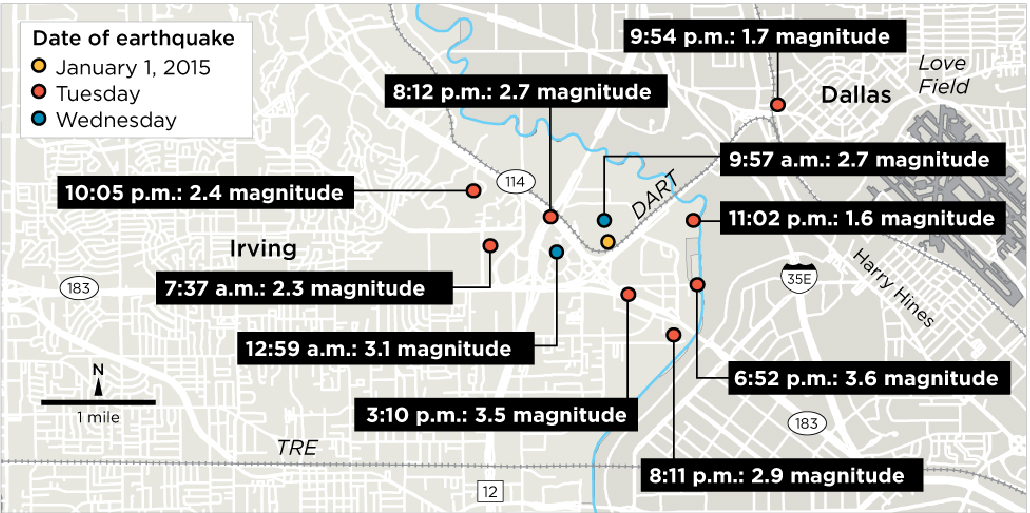 No one really has any idea what's causing the "swarm" of earthquakes along the Irving Dallas border. What is known is that this is a new phenomenon. None of us who grew up here in the DFW area can ever remember having this kind of problem with the ground shaking – and certainly not with almost a dozen noticeable quakes in 24 hours.
No one really has any idea what's causing the "swarm" of earthquakes along the Irving Dallas border. What is known is that this is a new phenomenon. None of us who grew up here in the DFW area can ever remember having this kind of problem with the ground shaking – and certainly not with almost a dozen noticeable quakes in 24 hours.
Circumstantial evidence points to "human-induced seismicity" as the oil and gas industry folks call it, although one can't be certain. Ground zero for these earthquakes is along the Balcones Fault, about the oldest geographical feature in Texas – clocking in at one billion or so years old. It's the same fault that runs down Highway 67 and then I-35 by way of the limestone escarpment in Cedar Hill and Midlothian, the one the cement plants there mine for raw material. It snakes up to the Texas – Oklahoma border in less dramatic fashion, including along the Trinity River bottomland where the Irving/Dallas quakes are being recorded.
What's also known is that when you apply new pressures, or re-arrange the pressures, to an existing fault, you get movement. That why deep injection of anything – fracking wastes at a well disposal site or CO2 at existing wells, have been linked to triggering earthquakes – especially where there are already faults.
This is what was probably happening in December 2013 through January and February of 2014 in and around Azle, when that part of the Metromess was experiencing it's own earthquake "swarms." There are at least two injection wells in the vicinity that were at the center of many of the quakes and since their pressures and volumes have been decreased, those swarms have decreased as well.
We know that a couple of fracking waste injection wells at DFW airport on the edge of Irving were closed because of suspected links to earthquakes they were causing.
"And an earlier study by scientists at Southern Methodist University (SMU) and UT found links between disposal wells near the DFW airport and induced earthquakes for a series of quakes in 2008 and 2009. The study specifically looked at two injection wells in the area that were built in 2008. Seven weeks later, earthquakes started. “Were the DFW earthquakes natural or triggered by activities associated with natural gas production, most likely saltwater injection to dispose of brines?” the report asked. The study said yes, the “correlations are consistent with an induced or triggered source.”
Those DFW airport wells have been closed for years, but with millions of gallons of waste being stored deep underground, are they still capable of causing pressures on the Balcones and/or faults that feed the Balcones? We know less about the geology underneath us than we do the deep space above us.
In the middle of the earthquake swarm there are two gas wells on the University of Dallas campus – one that was producing until 2012 and one where the casing failed and shut down early on. They've been there since 2009 but we don't know the recent history of either.
No new drilling or injection activity is known to have occurred at or near the sites of the most recent earthquakes.
We've come a long way from the original perceived foil hat territory of fracking activity causing earthquakes. When many of us first heard about this association, it sounded like science fiction. Now we know it's science fact. Even the oil and gas industry concedes that injection wells have a connection to earthquakes. That's a huge change in the debate since only a few years ago.
What is less known, and what the industry does not concede yet, is that fracking alone has been linked to earthquakes.
A 2012 British study found fracking itself caused small earthquakes near Blackpool.
The report, undertaken by independent experts and commissioned by the UK’s Department of Energy and Climate Change, looked at the relationship between fracking operations by the Cuadrilla company at Preese Hall well, near Blackpool in Lancashire, and small earthquakes between April and May of 2011 – the largest a magnitude 2.3. The report agreed with previous studies that the earthquakes were caused by the process.
It said the stress in the fault was pre-existing and the hydraulic changes made by fracking initiated the earthquake sequence.
The same thing happened in Canada with fracking near the Horn River Basin.
"…a report released recently by the B.C. Oil and Gas Commission sheds light on the huge shale gas deposits in northeastern B.C. Quakes recorded by Natural Resources Canada ranged from 2.2 to 3.8 on the Richter scale, below the 4 mark and thus deemed minor.
"The investigation has concluded that the events observed within remote and isolated areas of the Horn River Basin between 2009 and 2011 were caused by fluid injection during hydraulic fracturing in proximity to pre-existing faults," the commission said in its report."
We don't know what's causing the Irving quakes, but we do know that fracking alone has been known to cause the size of earthquakes being recorded there now. To suggest that only injection wells have been linked to quake activity is just plain wrong.
We're messing with Texas geology in a way that we haven't before, in areas of the state where we haven't before. We really don't know what the long-term consequences of that messing are.
Why We Fight: In 1996 and Now
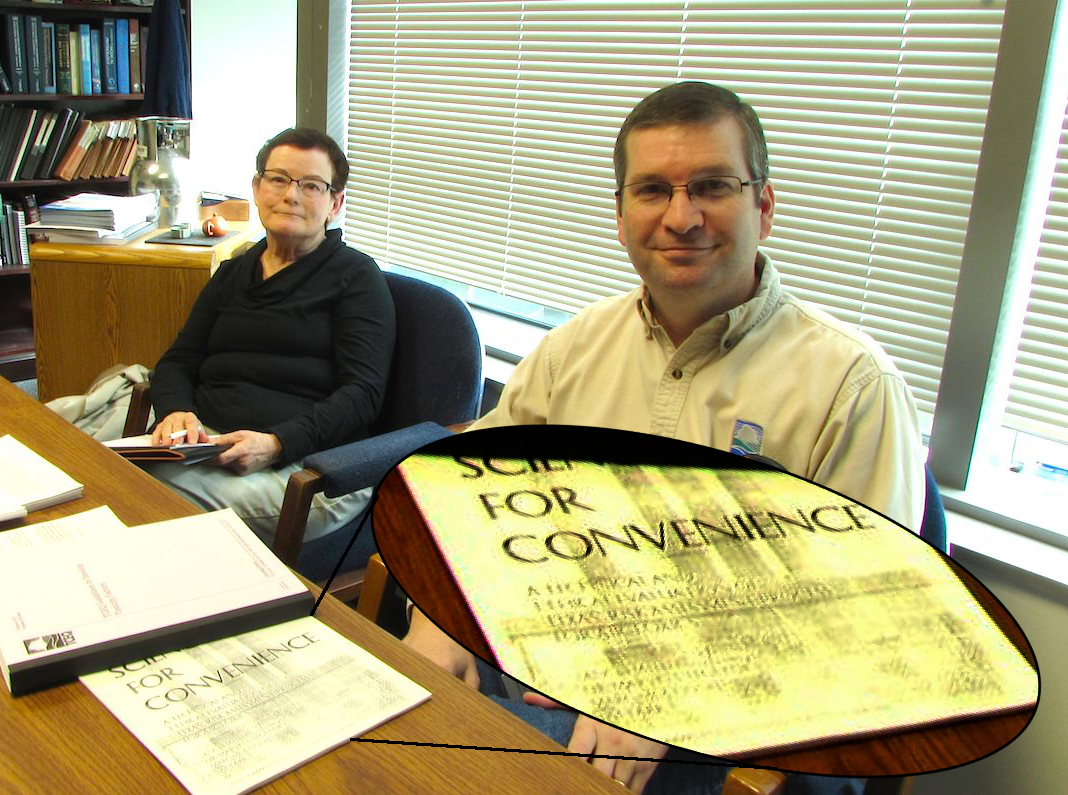 We found a piece of Downwinder's legacy in a very unlikely place this month – on the desk of TCEQ Toxicologist Michael Honeycutt.
We found a piece of Downwinder's legacy in a very unlikely place this month – on the desk of TCEQ Toxicologist Michael Honeycutt.
Right before Christmas, the Washington DC-based Center for Public Integrity published a great examination of how the Texas Commission on Environmental Quality goes out of its way to make sure the poisons citizens are being exposed to in the real world hardly ever reach "levels of regulatory concern." It spotlights Benzene, although you could easily find half a dozen other examples of where the state is moving the toxicological goalposts. This regulatory slight of hand is being directed by Honeycutt, the "smog isn't bad for you" guy that tries to provide the technical fig leaf for the blatant political motives behind the TCEQ's downplaying of pollution harms.
In the middle of the article is a photograph of Honeycutt at his desk with various reports splayed out in front of him. According to the reporter, she asked him to pull out some of the documents that have been influential in getting the TCEQ to re-examine the way it analyzes toxic exposures and human health harms.
And what do you know, right there in front is Downwinders at Risk's own 1996 "Sacrificing Science for Convenience" report – the first-ever critical look at how the state of Texas was officially evaluating toxic exposures, authored by the late great Dr. Marvin Legator of the UT Medical Branch in Galveston and Jim Tarr, a former Texas Air Control Board engineer, who's become an independent consultant, and is in fact quoted in the Center's new article as well.
This report, later turned into a peer-reviewed journal-published article, was a devastating methodical blow-by-blow examination of how the state's "Effects Screening Levels" (ESLs) for pollution were political tools for regulators to allow massive pollution without concern for any adverse human health effects. It led to an embarrassing Houston Chronicle series several years later that forced the state to revamp the ESL system.
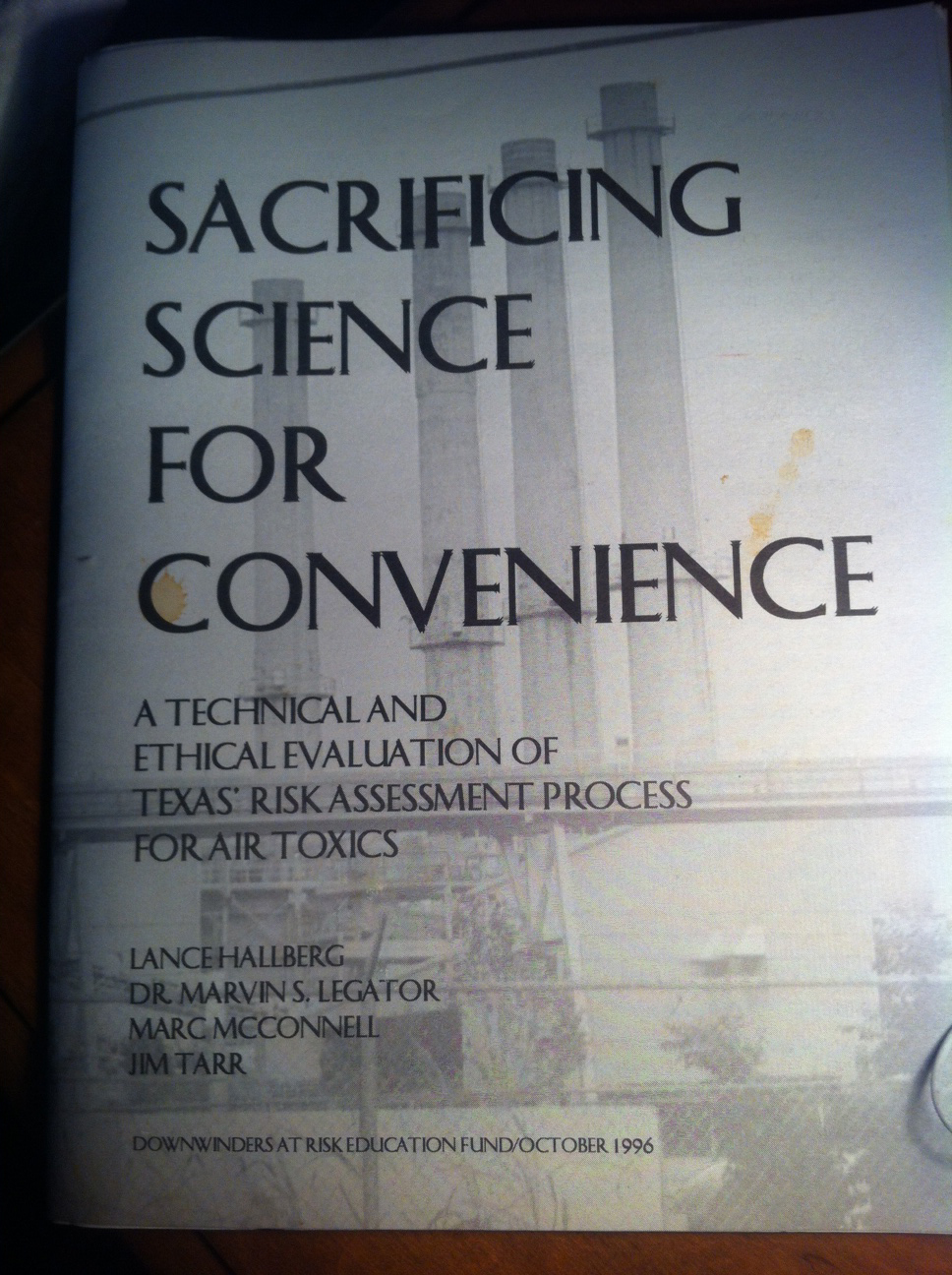 This was the first time anyone had led an scientific inquiry into how the State of Texas regulated toxic exposures. This effort wasn't commissioned by a national or even statewide environmental group, with lots of money and a staff of its own. It was scrapped together by a grassroots group of citizens in DFW.
This was the first time anyone had led an scientific inquiry into how the State of Texas regulated toxic exposures. This effort wasn't commissioned by a national or even statewide environmental group, with lots of money and a staff of its own. It was scrapped together by a grassroots group of citizens in DFW.
At the time, Downwinders' energy was aimed only at fighting the burning of toxic waste in the Midlothian cement plants. Such a report didn't directly serve that cause at all. That's why we're so proud of it. In the middle of the longest, most expensive hazardous waste permit fight in Texas history, we took the time and money to pay for a report that would expose a problem every citizen living near a polluter was facing. We looked at the fundamentals and saw a larger need than just our own self-interests in Midlothian. We took the longer view.
We're still doing that.
We're the only environmental group dealing with fracking as a regional air pollution issue – taking it out of the city-by-city fights we're all accustomed to, and looking at the larger picture of how it adds to North Texas smog.
We're still the only group looking for ways we can disrupt the authority of the state in setting our local environmental agenda. Over the next few weeks you’ll learn how Downwinders is sponsoring the very first effort to give local officials access to the same computer “modeling” the state uses to build its clean air plans. But this computing power is being used to do things the state is refusing to do – like looking at what pollution control measures work best in DFW. It’s the first time anyone has challenged the state’s exclusive ownership of the region’s air computer modeling.
Next month, you’ll see local DFW doctors and nurses testifying on behalf of cleaner air at public hearings on the state’s proposed new smog plan. They’re being organized by Downwinders in an effort to form a North Texas health professionals speakers bureau to put on the front lines of air pollution controversies. Not just our fights – everyone's fights.
Downwinders is doing work no other group is doing – work that benefits everyone who's being shat on by an industrial polluter – whether its a cement plant, a coal plant, or a gas compressor. Because, just like in 1996 when we published "Sacrificing Science for Convenience" we see our job as a larger than our own fights. We understand that we're part of a larger citizens movement. One about the distribution of political power, and the autonomy of an individual to decide for themselves what risks to their health are acceptable.
Next Monday, we'll be sending out an e-mail alert that will be jam-packed with January news about state and national clean air hearings, tributes to our local heroes, and on-going local fights. 2015 is going to be another busy year for us. But we need your help to fund our work today and the next three days. We do what we do on a shoestring budget – usually not more than $30-50,000 a year – but we need new shoestrings. We're completely local, which means we're completely dependent on people like yourself who see the value in our work. If we can't put our organizer in the field, a lot of good things that we want to do next year won't happen. And that'll be a shame not only for our own causes, but for the larger cause as well.
Please click here and give whatever you can.
Anything is truly appreciated – and will contribute to work that has a long shelf life. Thanks.
A Woman of Substance: Theo Colborn 1927-2014
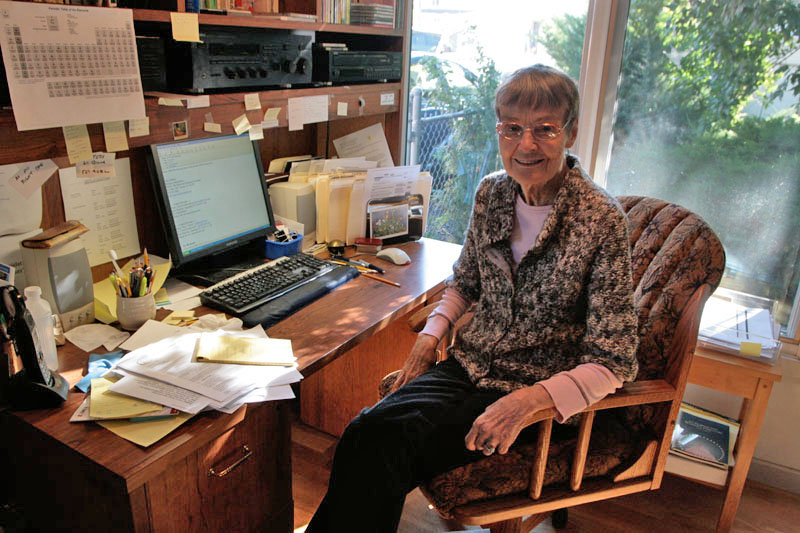 Sad news came on Sunday that Dr. Theo Colborn had died at the age of 87.
Sad news came on Sunday that Dr. Theo Colborn had died at the age of 87.
F. Scott Fitzgerald said there are no second acts in American lives, but he said that well before the woman's movement of the 1970's flourished and allowed an entire generation to experience one. Dr. Colborn's second act just happened to change the entire debate over environmental health.
Theo Colborn had already retired from her first occupation as a pharmacist, when at age 58, she decided to go back to school in 1985. She got a PhD in Zoology from the University of Wisconsin, with minors in epidemiology, toxicology and water chemistry. She told a PBS film crew that she wanted to get an education so that "maybe I could undo some of the things my generation basically foisted on society."
After school she began working on clean air issues in Washington DC but then went back to the Midwest to join a comprehensive study on the pollution affecting the Great Lakes. This gave her a chance to review emerging science from a more holistic viewpoint than a specific "reductionist" academic discipline or specialty. She was looking at an entire ecosystem. Although there was lots of new literature on the subject of how chemicals were impacting different species in the Great Lakes region, no one was pooling the research for evidence of possible trends, similarities and effects. She began to use the new tool of computer spreadsheets to do just that…for the very first time.
Her results surprised her and launched a new career that lasted right up until Sunday. What was doing the most harm to Great Lakes animals were not one-off catastrophic events like accidental pipe ruptures that dumped thousands of gallons of industrial poisons into the water, but the long-term, low-level assault by a variety of everyday synthetic chemicals. Their worlds were ending not with a bang, but a whimper.
Cancer was the big sexy health effect from pollution that everyone was looking for back then, but it was notoriously hard to prove a link between a polluting cause and a cancerous effect. Colborn's research discovered many more subtle, more insidious, impacts from pollution at levels which were officially "below regulatory concern" – first in the biology of animals, then in people.
Fetuses were particularly vulnerable to these impacts, which affected how hormones could change the shape and function of internal organs, reduce the ability of an animal to behave "normally" in its environment, harm the immune system's ability to respond to routine threats, even warp reproductive systems in gender-twisting ways that seemed to remake males into females and females into males. Such changes weren't necessarily fatal like cancer, but were being passed on from generation to generation until a species could no longer reproduce healthy versions of itself. The biological Xerox machine kept malfunctioning in small and large ways over time until the copies no longer looked like the originals. Because animals had shorter life cycles, you could see the effects of these changes add up much quicker than you could in humans, but Colborn had no doubt that similar effects were occurring within our own species as well.
This field of research was so new, it didn't even have a name. In 1991, she and 20 other scientists investigating it gave it one – endocrine disruption. In 1995 she and three others wrote the founding document of this new science, the best-selling book, "Our Stolen Future" chronicling how everyday, ubiquitous man-made chemicals were impacting human development. Not since Rachel Carson's "Silent Spring" (another work by another woman who was thinking outside the box) had a single book so challenged the conventional ideas about pollution and its impact. It remains required reading for any environmental activist.
If you were doing field work around industrial pollution sites in the 1990's, as Downwinders at Risk was in Midlothian with its three cement plants, one of which was the largest burner of hazardous waste in the state of Texas, the book instantly connected the dots between what was coming out of the smokestacks and the strange health effects being reported by local citizens. It was the constant exposure to the toxic soup of dozens of contaminants that could be the explanation behind inexplicable birth defects of almost any animal population being breed near-by, as well as the heretofore unknown health effects among the plants' neighbors. Reading the book, one felt like you'd discovered the Rosetta Stone of environmental health.
Every article you've ever read about the possible dangers of the plastic packaging additive BPA, or declining sperm counts in males all over the world, or male fish behaving like female fish, can be traced back to Theo Coburn and her peers who founded the field of endocrine disruption. Subsequent science has linked pollution exposure to Parkinson's disease, autism and obesity. Her overarching point was that we are swimming in a sea of industrial chemicals without knowing very much at all about their effect to the human body. That thesis is being proved right almost weekly by scientists, some of whom were not even born when Colborn decided to embark on her second career.
Her lifetime spanned the maturity of the environmental movement itself, from conservation-minded tree hugging concerns to people-poisoning invasions of the body snatchers health effects. There's no imagining the contributions she could have made had she devoted the first part of her adult life to the cause, but the entire human race is a beneficiary of her decision not to stay a retired pharmacist. She did not go quietly into that good night. She turned the world upside down on her way out. R.I.P.
The Mansfield Fight Goes National And Industry Gets Worried
 We must be doing something right.
We must be doing something right.
Last Thursday, Energy in Depth, the national PR arm of the oil and gas industry, singled out Downwinders at Risk for our support of longer setbacks between people and gas industry facilities in Mansfield and other North Texas cities.
EID calls these setbacks, now passed in DISH, Denton, Southlake and Dallas, "defacto bans" because they require wells and compressors to be anywhere from 1000 to 1500 feet from homes, schools, park and other "protected uses" – to use city zoning lingo.
But of course these setbacks are defacto bans only because industry wants them to be – not because there are any technical obstacles to them reaching the gas underneath these cities due to distance. Gas operators can now punch a hole and reach deposits up to at least a mile or two away from where they place their rig on the surface. That's more than three 1500-foot setbacks end-to end. Operators have to spend more to drill to get that gas, but that's the price they pay for trying to place heavy industry in the middle of residential areas, parks, or near schools – something most cities don't allow when it comes to hazardous waste incinerators, chemical plants or landfills. Part of the problem is the inherent arrogance of the gas industry's position – it wants to pollute like a heavy industry, but it doesn't want to be regulated like one.
You know the folks in Corporate are getting worried when these things pop up on the Energy in Depth agenda. They understand their much-beloved "Fort Worth model" of less protective 600-foot setbacks and looser regulations in now under organized assault. While the rest of us see a constant barrage of new studies coming out every month emphasizing the dangers to human health of proximity to gas facilities, the industry wants time to stop in 2010, before we knew so much. But time marches on. And so does knowledge, and then public opinion.
Mansfield is deep into the Shale. It shares a border with Ft. Worth, unofficial headquarters for the Barnett Shale Energy in Depth crowd. A rejection of Cowtown's approach to regulating the gas industry here would be a major setback to the industry. The stakes are high. Just in the last week, two national publications, a subscription-only national newsletter called Environment and Energy Daily, and the Center for Public Integrity, have posted stories on the Mansfield fight. They've hit a nerve. That's why Energy in Depth is writing about it.
Getting criticized by EID is recognition that the partnership between Mansfield Gas Well Awareness and Downwinders at Risk is having an impact. We consider is a badge of honor. Our only regret is that it came too late to be used in our traditional end-of-year fundraising letter. Because after months of frustration, Mansfield residents are finally getting the attention they and their complaints deserve from their city council and the media. It's a national fracking fight hotspot. That's not an accident. That's good organizing.
Building Momentum in Mansfield
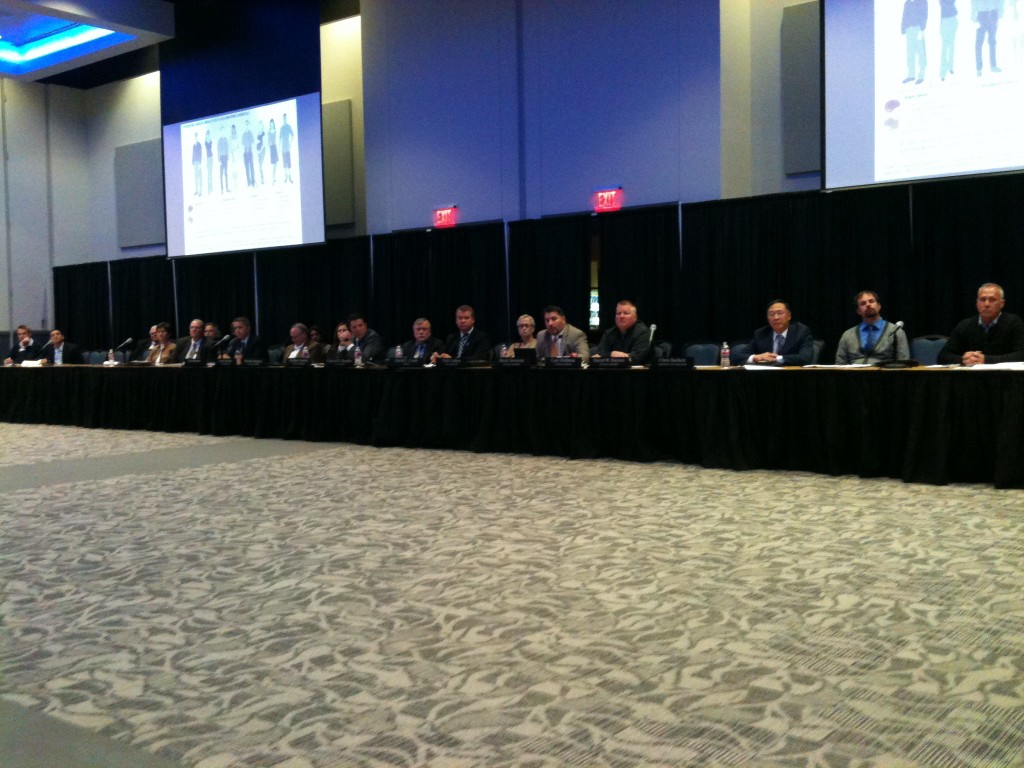 Good things come in threes. Lance Irwin, Erick Orsak, and Tamera Bounds proved that again on Wednesday night when they led the Mansfield Gas Well Awareness contingent during the Mansfield City Council's "work session" on rewriting the city's gas drilling ordinance.
Good things come in threes. Lance Irwin, Erick Orsak, and Tamera Bounds proved that again on Wednesday night when they led the Mansfield Gas Well Awareness contingent during the Mansfield City Council's "work session" on rewriting the city's gas drilling ordinance.
Combined, they projected just the right mix of competence, skepticism, and experience to combat the "Don't worry, be happy" approach of the Railroad Commission and Texas Commission on Environmental Quality presentations that preceded them in the agenda.
(By the way did you know, that according to Austin, the average response time of a TCEQ inspector responding to a complaint was only 5 hours? Downwinders at Risk is willing to pay $100 to the charity of the inspectors' choice if anyone out there has ever gotten a response that quickly. After almost 30 years of dealing with state environmental agencies, we can't recall a single instance where it took less than a day for an inspector to show up, even when the situation was "urgent.")
By putting the three residents in the same horseshoe as industry, state agencies, and itself, the Council elevated the status of the resident's group beyond anything it had enjoyed in previous rounds of jousting over drilling. Whether that leads to the kinds of substantial changes to the city's drilling ordinance the group is pursuing remains to be seen.
What was obvious after the formal presentations ended and a more informal question and answer period followed was the large disparity in monitoring and self-regulation within the industry. There were at least 10 or 12 gas operators sitting at the table during the event. Conspicuous by its absence was Eagleridge, the source of many complaints in Mansfield and of course, the company that ignited the Denton fracking vote controversy.
But Eagleridge's Chief Operating Officer Mark Grawe was present, in the back of the room, trying to keep a low profile. It didn't work. Let's just say when you get called on the carpet by Stephen Lindsey, the Mansfield Council member whose day job is the "Government Relations and Community Affairs Director" for gas industry giant Quicksilver, you know you're not going to have a good night. As the evening wore on, it was clear Eagleridge was being portrayed as the poor, white trash cousin of the more established players like XTO and Chesapeake. The company lacked the remote sensors, automatic cut-offs, and other kinds of precautions that the rest of the industry reps liked to brag about. By the end of a rigorous cross-examination of Grawe by the residents' group, there was an unacknowledged consensus that perhaps the floor for regulating existing wells needed to be raised in Mansfield so that moving target known as "industry best practices" was updated applied to all.
More ambiguous was the response to the residents' request for a 1500-foot setback to replace the current 600 feet requirement – with a variance that can decreases that distance to 300 feet. Some industry representatives and council members want to frame the problem in terms of incidents and accidents that can be fixed with better equipment, rather than systematic changes that require separating people from heavy industrial activity, no matter how good the intentions are.
Also left hanging was how to better regulate polluting compressors. The city's lawyers, who've written protective ordinances for Dish and Southlake, was more circumscribed with their Mansfield employers. Cities can't regulate pipelines and mid-stream compressors for "safety standards," already addressed by the Railroad Commission they said. Left unsaid was that cities can and have regulated compressors for noise and "odors," otherwise known as toxic chemical exposures.
Bounds presented the city council with what she called a model ordinance that combined the best, most protective aspects of drilling regulations from DISH, Southlake, Dallas, Denton, Arlington and even Fort Worth. Saying these were legal requirements that hadn't been challenged by industry and so were available for adoption by the city, Bounds put the council on the spot by saying Mansfield needed to protect its citizens at least as much as these other municipalities and had no legal excuse for not doing so. Mayor David Cook took note of the work she'd done in compiling the new ordinance and said the city would perform its own side-by-side comparison and come back in January to continue the discussion.
Overall, the mood of the evening was cautious but positive. It was hard not to be impressed by the residents' knowledge and expertise, and everyone was civil in public. Afterwards, however, one of the first things Bounds heard was an industry operator telling her there was no way he was going to accept a 1500-foot setback. There is still plenty of work to be done. But it was a step in the right direction. And there are no big changes without incremental changes first.
It helped that the media were out in force, trying to identify the next fracking hotspot after Denton. There was a row of TV cameras and local and national print reporters showed up to take notes. Channel 8 had the best coverage of the evening, and if you can get past the paywall, here's the Star-Telegram's take.
As has been noted before, Mansfield is no Denton. It's not even Southlake or Flower Mound. It resembles Ft. Worth more than it does Dallas in terms of politics and attitudes toward the gas industry by the Powers That Be. It has more wells per capita than just about any place else in the Shale. But those are all reasons that make it worth fighting the good fight there. If residents can make their case effectively and change their situation in Mansfield, then there really is hope for everyplace else in the Barnett. Stay tuned.
Make Your Butt A Force for Good Tonight
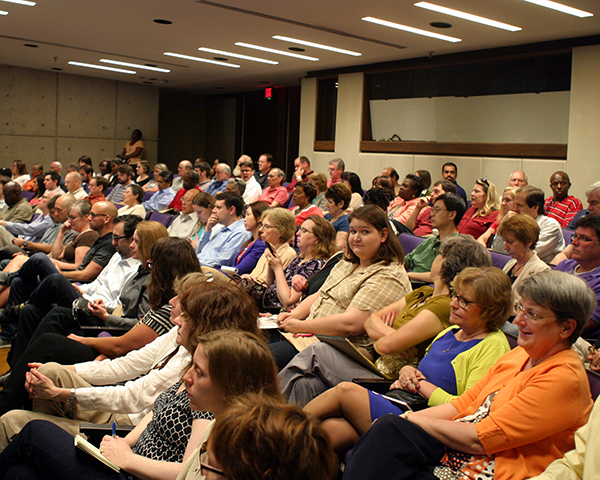 Woody Allen is famously credited with the line that "showing-up is 80% of life." With organizing, it's more like 90%. There are at least two places to be tonight where just your butt in a seat will make a huge, positive difference:
Woody Allen is famously credited with the line that "showing-up is 80% of life." With organizing, it's more like 90%. There are at least two places to be tonight where just your butt in a seat will make a huge, positive difference:
1) Mansfield City Council Work Session on a New Gas Drilling Ordinance, 6 pm, Mansfield Performing Arts Center Workroom, 1110 West Debbie Lane, (near Hwy 287 – just south of I-20) (map).
After almost a year of struggle, residents of Mansfield are getting a hearing tonight in front of their city council. Unfortunately, the council, including two members who make a living from the gas industry, are making the the residents take on the Texas Commission on Environmental Quality, the Texas Railroad Commission, 10-13 gas industry representatives, pro-industry state representatives, senators, and Congressman, as well as their own city staff – all in one evening. They're besieged, and they really need your help tonight.
We have it on good authority that the Mansfield Mayor is using this set-up to "gauge public opinion on the issue" even though members of the public won't get to speak. So it's all about attendance – butts in seats.
Mansfield isn't Dallas. It isn't Denton. It's not even Southlake or Flower Mound. It's deeper into the Shale, more blue collar, and more pro-industry than any other city that's been challenged over their old drilling ordinance in the last several years. The city has more gas wells now per capita – over 200 in a city of 60,000 – than just about any other place in North Texas – with a potential for 300 more. Concerned residents are at a disadvantage in trying to change the status quo.
Just your being there in a seat tonight sends a message you care about this issue. And if you live in Tarrant county or any place else where there's gas drilling in the Metromess, it's in your own self interest to help them in Mansfield. A victory there will make it more possible to win in other places. It will mean less air pollution from their wells and compressors blowing downwind. It will mean the tide is moving further west.
So do yourself, the region, and the cause a favor and show up tonight. You don't even have to speak. You just have to be present to win.
2) Trinity Toll Road Debate – 6:30 p.m. at Rosemont Elementary School, 1919 Stevens Forest Drive (map)
State Representative Rafael Anchia is sponsoring this debate over this leftover 20th Century boondoggle that features almost all the major players on both sides of the issues – Michael Morris, Mary Suhm, Patrick Kennedy and Scott Griggs. Again, your presence sends a valuable signal – that you're opposed to this floodplain toll way, and that this will be an important issue in the May Dallas elections. Go and be active members of the peanut gallery – cheer on the opponents, jeer the supporters.
It's particularly important that the public show increased interest tonight as Suhm and Mayor Rawlings conspire to muddy the waters with a new "review" of the plans of the road. They hope to give Citizen Council-backed candidates in the May election a way out of a simpey yes or no answer to the Toll Road – by saying their waiting for the review. You need to make sure they get the message that nobody is falling for that ruse.
Your butt can be a powerful voice for change tonight, or it can sit on the couch. Get out and show-up.
EPA Announces a New Ozone Standard. But Will It Make any Difference In Texas? Not Without a Push.
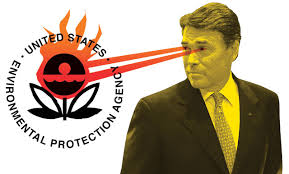 On the day before Thanksgiving EPA Administrator Gina McCarthy went forward with a recommendation to lower the federal ozone, or smog, standard from the current 75 parts per billion (ppb) to somewhere between 65 to 70 ppb, while also agreeing to take public comment on a new standard as low as 60 ppb.
On the day before Thanksgiving EPA Administrator Gina McCarthy went forward with a recommendation to lower the federal ozone, or smog, standard from the current 75 parts per billion (ppb) to somewhere between 65 to 70 ppb, while also agreeing to take public comment on a new standard as low as 60 ppb.
While this might seem like a big step, these are actually the same numbers that have been circulating since George W Bush was president. Since 2008 the EPA's own independent science advisory panel has recommended a national standard in the 60 to 70 range twice – and twice this recommendation has been put on a shelf because of political considerations, most recently in 2011. Now, with the re-election campaign behind them, the Obama Administration has decided to tepidly move forward.
Making the range recommendation it did means that the agency will take comments and mull it over for a year before deciding to issue a specific number in December 2015. There will be at least three national public hearings as part of that comment period – although we don't know the locations of those hearings yet. Once it decides on a particular number for the standard, the Administration most likely will give states until 2025 to comply with it. Or in Texas' case, we should probably say they'll give the state until that year to fail to achieve the standard for the first time.
According to the EPA,
…the new regulation would by 2025 prevent from 320,000 to 960,000 asthma attacks in children, and from 330,000 to 1 million missed school days. It also estimates that by 2025 the rule would prevent 750 to 4,300 premature deaths, 1,400 to 4,300 asthma-related emergency room visits and 65,000 to 180,000 missed workdays.
Besides saving lives and preventing illness, the effect of the new standard will be to broaden the number of counties brought into "non-attainment" by the EPA across the state, and thus subject them to the same ineffectual TCEQ proposals for cleaning up the air DFW has been experiencing for decades.
Reaction from industry and Austin was predictable and predictably wrong-headed. Over the last 20 years, as the national standard has been lowered to account for the increase in knowledge we have about the human health effects of smog, Texas has never supported any change. Any. Never. It's always argued that lowering the standard wasn't necessary to protect public health and too costly to industry – causing economic calamities that never seem to happen. If it was up to Austin, we'd still be choking at the level of 125 ppb that was in effect up until the mid-1990's.
Of course in recent years, Rick Perry's TCEQ has added a nice Orwellian touch by having its "toxicologist" argue that smog isn't really that bad for you.
Maybe that's why no one has had a lot of confidence in the state's ability to write a new smog plan for DFW that will get levels down to the current 75 ppb standard by the deadline of 2018. That plan is being put in the regulatory pipeline by TCEQ and will be going to public comment itself beginning December 26th (yes, that's right, the day after Xmas) and running through January 30th. They'll be a public hearing on it as well in he next 60 days, probably in Arlington, although details haven't been released.
Although it's called a plan, there's no planning in it. The state proposes to do absolutely nothing to reduce pollution from any major smog source. Nada. No new controls on cement kilns, coal plans or gas facilities. Instead it says that the federal government's new gasoline mix, to be introduced in 2017, will produce enough of a decline in smog to get the region "close enough" to the 75 ppb standard. Never mind that that standard is now medically obsolete according to the EPA, and God forbid the state should require more pollution controls to aim for the lower 65-70 level we all know is on its way. Nope. At last count there were still three local monitors that hadn't even reached the 75 ppb level by 2018 in the state's computer model prediction, and that result relied on a steep decline in oil and gas drilling that may or may not happen.
According to the Clean Air Act, the state is supposed to be requiring major sources of smog pollution in DFW to install all "Reasonably-Achievable Control Measures"(RACM) that could help speed our compliance with the 75 ppb standard. This would include things like SCR (Selective Catalytic Reduction) on the Midlothian cement plants and East Texas coal plants and electrification of compressors in the Barnett Shale gas patch. However, Austin says those ideas are not "technically or economically reasonable."
The state might have a point – if companies within those same industries weren't already turning to these options voluntarily. For example, Holcim has applied for a permit to install SCR in one of its Midlothian cement kilns. So is Rick Perry's TCEQ saying a multinational cement company operating in the private market with two competitors down the road is installing a piece of pollution control equipment out of the goodness of its bottom-lined heart that's neither technically or economically feasible? Are Holcim's managers a bunch of profit-losing unrealistic treehuggers? Hardly.
Likewise, SCR has been installed on plenty of US coal plants – just not on the oldest dirtiest one in East Texas that need it the most. It's not a new technology at all. Same with electric compressors. In fact, those are required now under some city drilling ordinances. Wouldn't you hear banshee-like howls from the oil and gas industry, much less lawsuits, over those ordinances if that was not a technological or economically feasible alternative? In fact, electrification saves money by reducing the waste of gas product it takes to run conventionally-powered compressors.
This is the ridiculous result of a regulatory agency being an extension of a presidential campaign that promises to be easy on business and tough on the EPA. The order has come down from on high that no new pollution control requirements are to be sought by TCEQ in these smog plans, no matter how silly it makes the state look, or how much dirty air Texas residents have to breathe.
That's why in addition to calling for these kinds of pollution controls in the public comment process, and only having those comments fall on deaf ears in Austin, citizens must also put pressure on the EPA – too often the state's enabler in these matters.
As the ultimate authority on enforcing the Clean Air Act, the EPA can reject the state's plan and send it back to the drawing board with specific recommendations, or substitute a new one of its own creation – like it just had to do with the state's terrible haze-prevention plan that would have taken 150 years to work.
Certainly citizens have to put their case for federal action on the record during the TCEQ public comment period, but then we have to take that case directly to EPA and make them live up to their own regulations. And if they won't, then the next stop may have to be federal court.
If the last 20 years of clean air wars in Texas has taught us anything, it's that it won't matter what new smog standard the EPA sets, or whether the current one is being enforced or not, unless a federal agency or court, prompted by citizen action, make it matter.
North Texas Fracktivists Unite! You Have Nothing to Lose But Another Bad Drilling Ordinance

Mansfield City Council Work Session on a New Gas Drilling Ordinance
6 pm, Wednesday, December 3rd
Mansfield Performing Arts Center workroom
1110 W Debbie Ln, Mansfield, TX 76063 (map)
Denton's successful citizens revolt is off the streets for now and in the courts. The next organized front in the battle over urban gas drilling in DFW is the Fort Worth suburb of Mansfield. And this next Wednesday, December 3rd, beginning at 6 pm, hard-pressed residents there need your help in turning the tide.
In response to months of grassroots effort on the ground, and only after the very first presentation by a physician on the medical consequences of fracking, Mansfield's city council has called for a "work session" to "discuss" changing its circa-2009 drilling ordinance for next week.
Only this work session is designed to shut down the residents call for reform. The city is inviting
– The Railroad Commission
– The Texas Commission on Environmental Quality
-All local elected officials ( Joe Barton, Bill Zedler, Rob Orr, Jim Pitts, etc)
– All 12 gas operators with wells and/or compressors in town, including Eagleridge, Exxon-owned XTO, Chesapeake, Atlas, Devon and Enervest.
These "stakeholders," along with city staff and city council will be given 15 minutes to make the case that the status quo is just fine. And oh yeah, then the residents group – Mansfield Gas Well Awareness – will get their 15 minutes to rebut the previous 90 minutes. No "outside groups" like ShaleTest or Downwinders – are allowed to participate or aid them.
What began as a simple request by the residents to meet one-on-one with the mayor has now blossomed into this huge conflagration where the city hopes to overwhelm the local group. It's in the self interest of everyone concerned about clean air and citizens rights and good government and fracking to prevent that by showing up in support of change on Wednesday night.
Even if you don't live in Mansfield, you have a dog in this fight. The air pollution from those Mansfield wells and compressors ads to downwind smog and toxic air pollution that residents in Arlington and Fort Worth and places further away breathe.
Progress in Mansfield means progress is more likely in other places in the Shale. A victory there means we advance a new, better model for regulation further west. Mansfield has more wells per capita than almost anyplace else in North Texas, over 200 now in a city of just 60,000 with the potential for another 300. Like other Tarrant County cities, it got hit early and hard by the Boom. Its drilling ordinance was written in 2008-2009, and based on – what else? – Fort Worth's model of 600 foot setbacks. This is a chance to bring the newer, more protective Dallas-Southlake-Denton model deep into industry-friendly territory.
Showing up next Wednesday means you're saying no to the bullying tactics the Mansfield city government are using to silence local residents. Just like corruption and gas drilling went hand in hand in Dallas, so it is in Mansfield, with no apologies for using a gas industry spokesperson as the city's main negotiator for gas drilling issues.
Two of its seven city council members have direct ties to the gas industry and obvious conflicts of interest over gas drilling decisions for the city. But one of them, Stephen Lindsey, is the Mansfield city council's point person for all things gas related despite, or because, of his job as "Government Affairs and Community Relations Director" for Quicksilver Resources, the sixth largest operator in the Barnett Shale. We've written extensively in this blog post about Lindsey's national role as an industry expert in "managing" local opposition to drilling. The guy is an industry PR troubleshooter and he's now personally directing Mansfield's response to the resident's request that the city update its ordinance.
Mansfield residents are besieged. They need your help. They need your butt in a seat on Wednesday night at the "work session." It's no coincidence this session is happening now, as the holiday season begins. The Powers That Be are hoping it wil get lost in the shuffle. Don't let that happen. If you want to see the legacy of the Dallas victory extended, if you want to see Denton's hard-fought victory pay-off elsewhere, please be at this Wednesday night showdown in Mansfield. It's the next hotspot for change, and we can't get it done without your active support.
Mansfield City Council Work Session on a New Gas Drilling Ordinance
6 pm, Wednesday, December 3rd
Mansfield Performing Arts Center workroom
1110 W Debbie Ln, Mansfield, TX 76063 (map)
